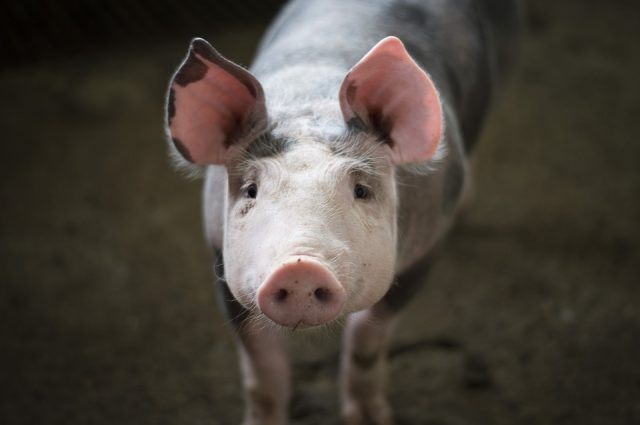Pigs have ‘remarkable’ level of behavioral, mental flexibility, Study

Some species within the pig’s family possess a remarkable level of behavioral and mental flexibility, a study published in Frontiers in Psychology revealed.
The researchers tested the ability of four pigs to play a simple video game with a joystick. Two Yorkshire pigs named Hamlet and Omelette, and two Panepinto micro pigs, Ebony and Ivory.
All four were trained to use a joystick with their snouts in front of a computer monitor during the first phase of the experiment. They were then taught a video game in which they had to move the cursor toward up to four target walls in the game.
All pigs formed the tasks well above chance. It indicated the animals understood the connection between the movement of the joystick to the cursor on the screen. According to the researchers, the fact that these far-sighted animals with no opposable thumbs could succeed at the task is “remarkable.”
“It is no small feat for an animal to grasp the concept that the behavior they are performing is having an effect elsewhere. That pigs can do this to any degree should give us pause as to what else they are capable of learning and how such learning may impact them,” said lead author Dr. Candace Croney, a professor at Purdue University and director of the Purdue Center for Animal Welfare Science. Sarah T. Boysen, known for her work on chimpanzee cognition, co-authored the study.
Scientists already know that pigs are able of learning basic commands dogs like “come” and “sit” and even more complex tasks that require them to change behaviors when the rules of the game change. One study has shown that pigs can use mirrors to find hidden food in a courtyard, Croney noted.
In this new study, the researchers used food to teach and strengthen behaviors but they found that social contact could strongly influence their persistence. For example, when the machine dispensing treats failed to work, the pigs continued to make correct responses using only verbal and tactile cues. And only verbal encouragement seemed to help the animals during the most challenging tasks.
“This sort of study is important because, as with any sentient beings, how we interact with pigs and what we do to them impacts and matters to them,” Croney said. “We therefore have an ethical obligation to understand how pigs acquire information, and what they are capable of learning and remembering, because it ultimately has implications for how they perceive their interactions with us and their environments.”
The study ended before the researchers could investigate a more ambitious goal: whether such a computer interface using symbols could be employed to communicate with the pigs more directly.
“Informing management practices and improving pig welfare was and still is a major goal, but really, that is secondary to better appreciating the uniqueness of pigs outside of any benefit we can derive from them,” Croney said.
Photo by yairventuraf, Pixabay



